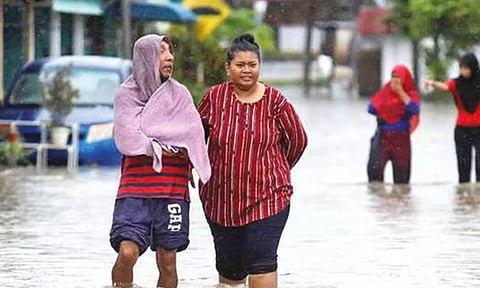

By STUART BRAUN
As we go deeper into 2023 and El Nino intensifies, we should expect a stunning year of global extremes which boggle the meteorological mind,” warned Florida weather reporter, Jeff Berardelli, in early June as Puerto Rico endured a record heatwave. Berardelli is among a growing cadre of TV meteorologists in the United States who are making the explicit link between weather extremes and climate change.“The base climate has heated due to greenhouse warming and a strong El Nino will push us to limits we have yet to observe,” Berardelli continued in a series of tweets after meteorologists confirmed the drier and hotter El Nino weather cycle has arrived.
But only a decade earlier, weather presenters were avoiding climate change. In 2012, Rolling Stone magazine reported that in a year of extreme weather events like Hurricane Sandy, record drought and wildfires, few TV meteorologists in the United States mentioned the term global warming. “The reason: There’s a shockingly high chance that your friendly TV weatherman is a full-blown climate denier.”
As many as 25 years ago, then US President Bill Clinton and Vice President Al Gore hosted 100-odd TV weather-casters in the White House to encourage them to report the link between extreme weather and climate change. “That was a great idea,” explains Edward Maibach, director of the Washington-based George Mason University’s Center for Climate Change Communication. But for the next decade or so, the opportunity was lost.
“Unfortunately, the US government didn’t follow up by producing localised materials that would make it easier for weather-casters to report on the local impacts of global climate change,” he said. Some TV meteorologists were instead targeted by climate change deniers. Many of which had links to right wing think tanks with strong fossil fuel ties and which used tobacco lobbying tactics to throw doubt on climate science. This so-called climate change counter movement “launched a sustained misinformation campaign to convince weather-casters that climate change was ‘a hoax’,” Maibach explained. A 2010 survey by Maibach’s team showed that 25% of US weather-casters believed the deniers. Another 25% “were skeptical that climate change was human-caused.”
Part of the problem was the lack of “a go-to source” to clarify complex climate modelling in a local context, said Bernadette Woods Placky. The Emmy-winning former weather-caster is also chief meteorologist and director of Climate Matters, a program launched in 2010 by Maibach and researchers from the US’ National Science Foundation to provide TV meteorologists with local climate information.
Educational programs like Climate Matters have since helped fulfill Bill Clinton’s wish by making weather-casters beacons of climate change information.
“About 95% of them now accept the realities of human-caused climate change, and nearly half of them are reporting on the issue in their community,” said Maibach.
So what has changed? Climate skeptics and conspiracy theorists have lately been attacking national weather bureaus that give TV meteorologists their information. Yet the overwhelming consensus on climate science increasingly drives weather news. Woods Placky says that while a minority of climate deniers have a “very loud” and “outsized” voice, 90% of people are open to learning more about how changing weather impacts them.
This article was provided by Deutsche Welle